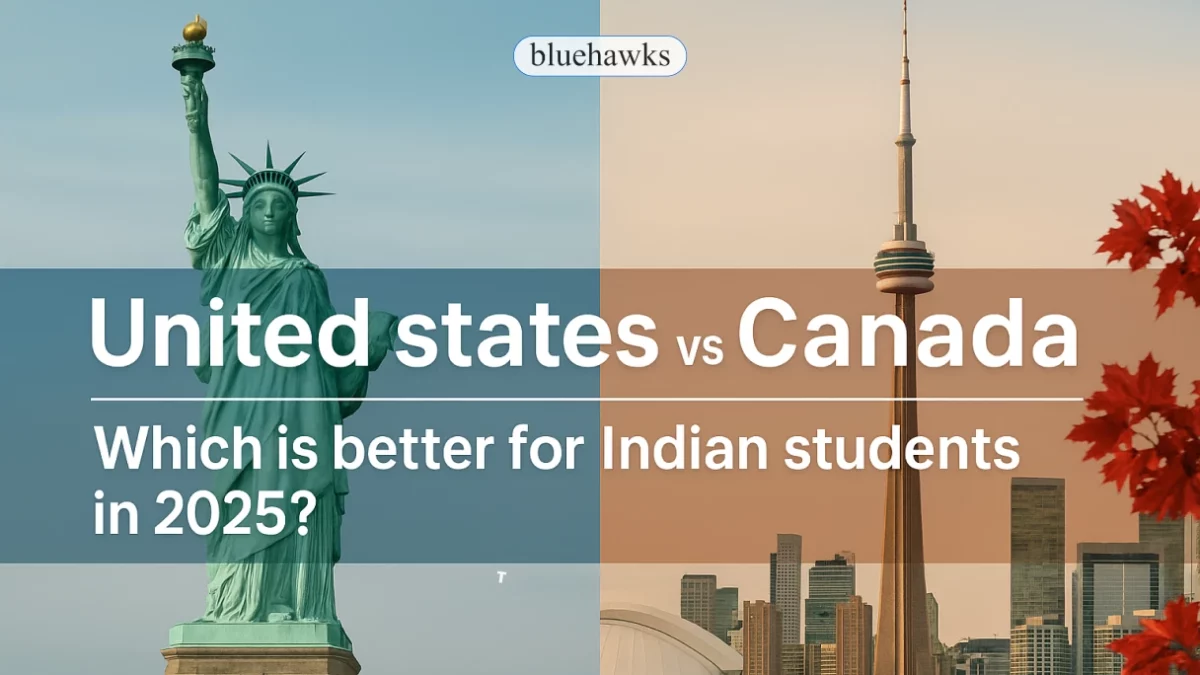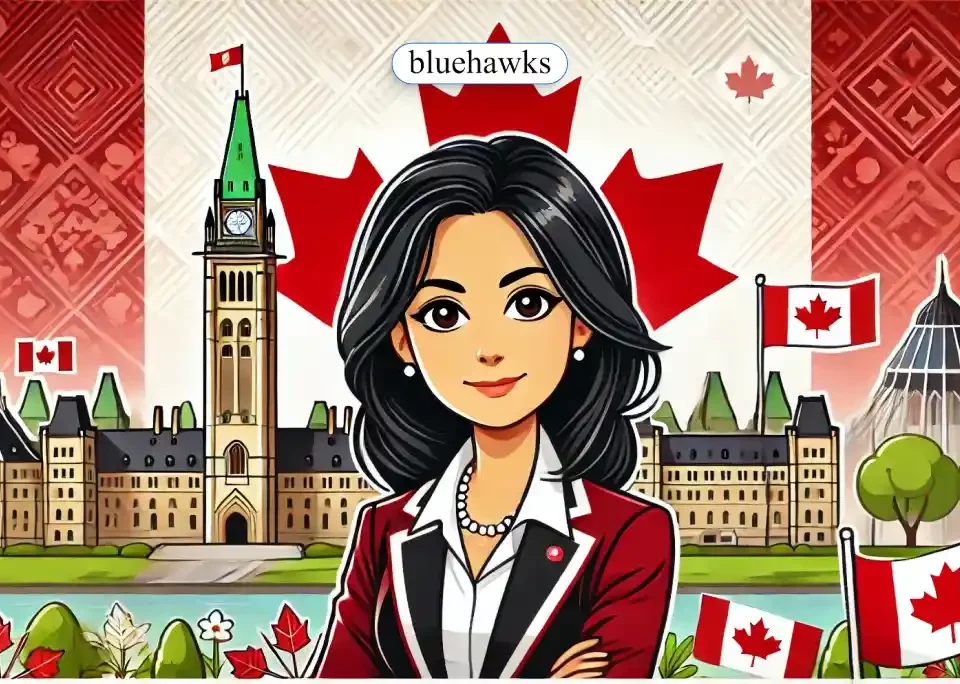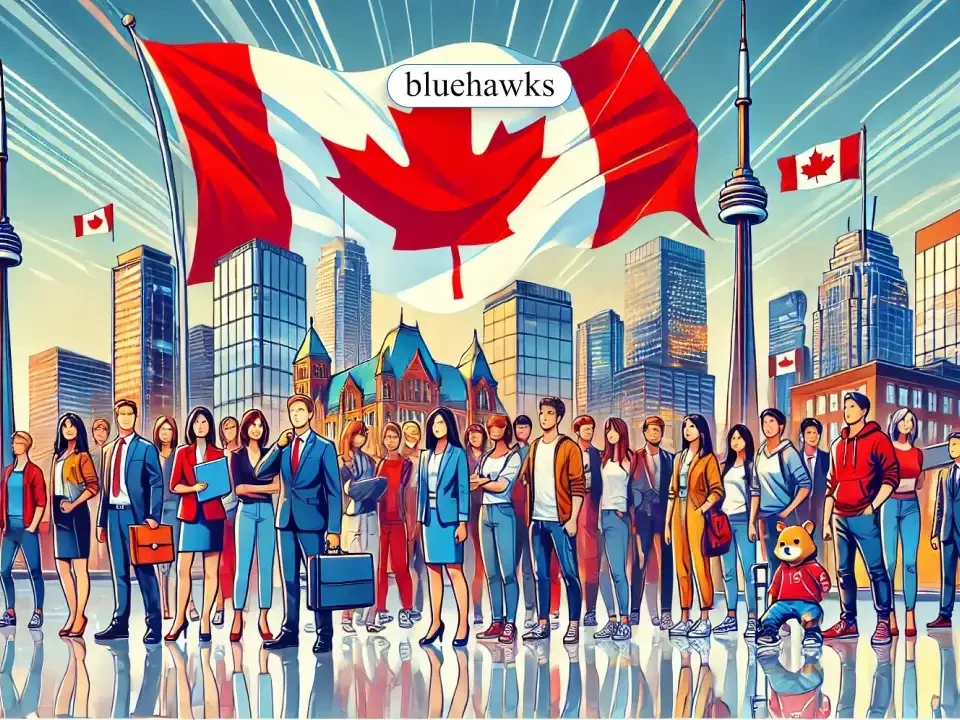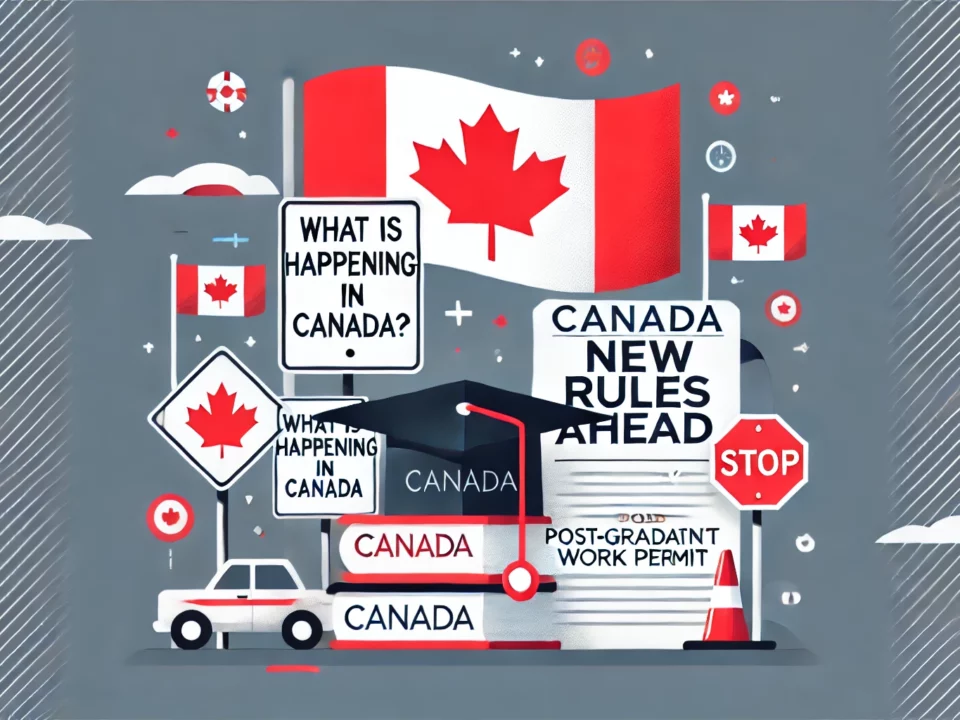
Estimated reading time: 4 minutes
🗽vs🍁
So, you’re planning to study abroad and stuck between the two most popular choices—the United States vs Canada?
Trust me, you’re not alone. Almost every second Indian student we talk to has the same question: “Should I go to the U.S. or Canada?” And honestly, both are amazing. But depending on your budget, career goals, and future plans, one might suit you better than the other.
Let’s break it down the real way — no jargon, just facts and clarity.
Table of contents
- 🗽vs🍁
- Admission Process – Who Makes It Easier?
- Tuition Fees & Scholarships – What’s the Real Cost?
- Living Expenses – Is One Country Cheaper?
- Part-Time Work – Can You Manage Your Finances?
- Post-Study Opportunities – Jobs, Work Permits & More
- PR & Settlement – Who Welcomes You Better?
- Community & Safety – Where Do Indian Students Feel At Home?
- 🔍 Final Verdict – United States vs Canada: What’s More Relevant for You?
- Still Confused? We Got You!
- TL;DR: Canada = Easier PR & affordability. USA = Big dreams & global networks.
Admission Process – Who Makes It Easier?
United States:
Applying to U.S. universities usually means you’ll need a GRE, GMAT, TOEFL or IELTS, plus SOPs, LORs, resumes, and sometimes even video interviews. It sounds like a lot (because it is), but top U.S. colleges value overall personality, extra-curriculars, and career goals just as much as academics.
Canada:
On the other hand, Canada keeps it a bit simpler. Many programs don’t even ask for GRE or GMAT, especially at public universities. If your academics are strong and your documents are in place, you’ve got a good shot.
👉 Verdict: For academically strong students looking for a smoother application, Canada takes the lead. But if you’re dreaming of Ivy Leagues or top tech schools, the U.S. is where you shine.
Tuition Fees & Scholarships – What’s the Real Cost?
Here’s the thing: studying in the U.S. is expensive. No sugar-coating that. Average tuition fees for a master’s can be around ₹25–40 lakhs per year.
Canada is relatively affordable. Many PG courses range between ₹12–20 lakhs a year.
But here’s the twist — U.S. universities offer way more scholarships, assistantships, and on-campus jobs. If you bag one, you might end up paying less than in Canada.
👉 Verdict: Canada wins on upfront cost, but the U.S. may balance out with scholarships, if you’re proactive.
Living Expenses – Is One Country Cheaper?
Whether it’s Toronto vs New York or Vancouver vs San Francisco, living costs vary a lot. On average:
- U.S. cities: ₹80,000–₹1,20,000/month
- Canadian cities: ₹70,000–₹1,00,000/month
Things like health insurance, groceries, and rent are slightly cheaper in Canada, but not by a huge margin.
👉 Verdict: Canada is slightly more budget-friendly, especially if you’re going to smaller cities.
Part-Time Work – Can You Manage Your Finances?
Here’s where both the United States and Canada offer decent options.
- In the U.S., you can work up to 20 hours/week on-campus during your studies.
- In Canada, you can work 20 hours/week off-campus, and from 2024–25, there are pilot programs allowing 24+ hours/week.
Also, Canada has structured co-op programs, while the U.S. gives you options like CPT (Curricular Practical Training).
👉 Verdict: Canada offers more flexible work options, especially off-campus.
Post-Study Opportunities – Jobs, Work Permits & More
This is the make-or-break part for many Indian students.
U.S.:
- After graduation, you get 12 months of OPT, and if you’re in STEM, you can extend it by another 24 months.
- You’ll need an H1B work visa, and that’s lottery-based. No guarantees.
Canada:
- Offers a Post-Graduation Work Permit (PGWP) of up to 3 years.
- No lottery system. Just complete your course, and you’re eligible.
👉 Verdict: If you’re thinking long-term work without visa headaches, Canada is more predictable.
PR & Settlement – Who Welcomes You Better?
When it comes to settling down, Canada is the clear winner. You can apply for PR within 1–2 years after completing your education, especially through the Express Entry program.
In contrast, settling in the U.S. takes years. Even after years of work, your Green Card is not guaranteed — unless your employer sponsors you, and that too with waiting lists.
👉 Verdict: Canada is better if you’re thinking about Permanent Residency and bringing your family in the future.
Community & Safety – Where Do Indian Students Feel At Home?
- Both countries are incredibly diverse.
- Canada has slightly fewer cases of racial bias and tends to be more immigrant-friendly overall.
- Indian students thrive in both places — from Silicon Valley to downtown Toronto, you’ll find people from your city, sometimes even your own school!
🔍 Final Verdict – United States vs Canada: What’s More Relevant for You?
Let’s break it down simply:
| Scenario | Best Fit |
|---|---|
| Low budget, need PR fast | 🇨🇦 Canada |
| Targeting Ivy League or top tech schools | 🇺🇸 U.S. |
| Want job security & smooth PR process | 🇨🇦 Canada |
| Ready to hustle for high-paying jobs | 🇺🇸 U.S. |
| Looking for scholarships/assistantships | 🇺🇸 U.S. (more options) |
| Want relaxed immigration rules | 🇨🇦 Canada |
In the United States vs Canada debate, there’s no one-size-fits-all answer. It really depends on what you value more — career opportunities, budget, or long-term settlement.
Still Confused? We Got You!
If you’re still unsure whether the U.S. or Canada fits your goals better, book a free profile evaluation with our expert team at bluehawks.
We’ll tell you exactly what suits your profile — no fluff, no guesswork.




